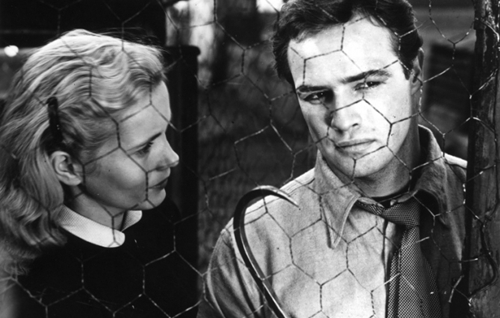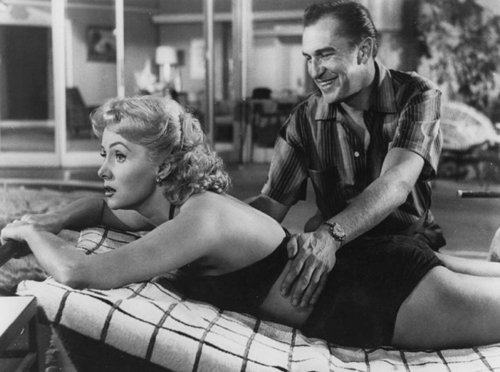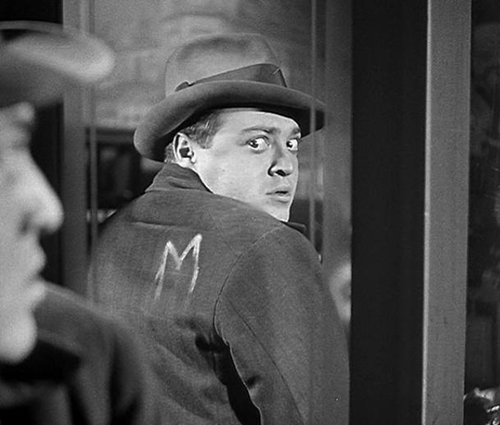The Noir File is FNB’s guide to classic film noir, neo-noir and pre-noir from the schedule of Turner Classic Movies (TCM), which broadcasts them uncut and uninterrupted. The times are Eastern Standard and (Pacific Standard).
PICK OF THE WEEK
“On the Waterfront”
(1954, Elia Kazan). 8 p.m. (5 p.m.), Saturday, June 7.
Elia Kazan’s socially conscious film noir masterpiece “On the Waterfront” is a touchstone of the American cinema, one of those movies you never forget. This powerhouse social drama, a film loaded with heart, brains and guts, pulls you into the crime-ravaged docks of New York City in the 1950s.
Shot in New Jersey and based on actual events, adapted by writer Budd Schulberg from a series of articles by Malcolm Johnson, the movie portrays an exploited band of longshoremen battling for their rights on a dock run by a corrupt union, gangsters and killers. Kazan, Schulberg and a wonderful ensemble give this story a stinging realism few other films of the ’50s can match.
In “Waterfront,” we get a ringside seat at a battle between good and evil, crime and the law. Pitted against the brutal, crooked union-boss, Johnny Friendly (Lee J. Cobb), is an idealistic, courageous priest, Father Barry (Karl Malden), and a washed-up, but eventually heroic ex-boxer, Terry Malloy (Marlon Brando).
Among the movie’s other indelible characters: Rod Steiger as Charlie, Terry Malloy’s fancy-dressing mouthpiece-for-the-mob brother, and Eva Marie Saint, in her Oscar-winning movie debut as Edie Doyle, whose brother was murdered by Johnny Friendly’s thugs, and with whom Terry falls in love.
“On the Waterfront” is a knockout on all levels. It has great direction (Kazan), a great tough script (Schulberg), great black-and-white photography (Boris Kaufman), great naturalistic art direction (Richard Day), a great score (Leonard Bernstein), and, most of all, that perfect ensemble cast, with the extraordinary Brando at his youthful peak.
Brando makes every one of his scenes come alive, breathe and bleed, especially when Terry cries out to his brother Charlie (Steiger): “You don’t understand! I coulda had class! I coulda been a contender! I coulda been somebody! Instead of a bum, which is what I am.”
We’ll always remember that electrifying confession of failure and pain in the back of that cab, coming from the young brilliant actor playing the gentle-hearted, beaten-down ex-pug. He moves us so deeply because he was more than a contender; he was the champ. He had more than class; he had genius. He was more than somebody. He was Brando.
You can watch “On the Waterfront” on TCM of course. But if you’re lucky enough to be in Los Angeles this weekend, you can see the film on the big screen at 7:30 p.m., Friday, June 6, at the Los Angeles County Museum of Art. Appearing on stage at that showing, to discuss the movie, will be one of its eight Oscar-winners, Eva Marie Saint.
Thursday, June 5
10 p.m. (7 p.m.): “The Tarnished Angels” (1957, Douglas Sirk).
The setting: New Orleans at Mardi Gras. The source: William Faulkner’s novel “Pylon.” Scripted by George Zuckerman, who also penned Sirk’s “Written on the Wind” (1956).
The stars (who also played in “Wind”): Robert Stack and Dorothy Malone are a married couple; Rock Hudson is Burke Devlin, a drunken newspaper reporter at the Times-Picayune, who becomes enamored of them both.
With compassion and high style, “Tarnished Angels” focuses on life’s fringes and the ironies of heroism. Brilliantly shot by Irving Glassberg (who also shot Sirk’s “Captain Lightfoot”), it’s one of the best-looking black-and-white/widescreen movies of its era, a dark gem of noir style.
The one flaw is Hudson’s mostly un-drunk Devlin. But it’s not his fault; Hudson began the movie playing Devlin as soused, but Universal, fearful of harm to their big star’s image, ordered him to play it sober.
The film is a classic anyway. It was Sirk’s favorite of the films he directed and Faulkner preferred it to all the other movies made from his work, even the acknowledged 1949 classic “Intruder in the Dust.” Faulkner, no stranger to booze himself, even liked Hudson’s cold-sober Devlin.
Saturday, June 7
8 p.m. (5 p.m.): “On the Waterfront” (1954, Elia Kazan). See Pick of the Week.
10 p.m. (7 p.m.): “Rumble on the Docks” (1956, Fred F. Sears). A poor man’s mash-up of “On the Waterfront” and “Crime in the Streets,“ with rebel rocker James Darren (“Gidget”), Laurie Carroll and Robert Blake.
11:30 p.m. (8:30 p.m.): “The Mob” (1951, Robert Parrish). Broderick Crawford is an undercover cop, playing a bad guy to infiltrate a poisonous waterfront mob. The Mob includes Richard Kiley, Ernest Borgnine, Charles Bronson and Neville Brand. Lesser known, but a good noir.
Sunday, June 8
 6 p.m. (3 p.m.): “Notorious” (1946, Alfred Hitchcock). With Cary Grant, Ingrid Bergman, Claude Rains and Louis Calhern. Reviewed in FNB on Feb. 12, 2013 and Feb. 20, 2012.
6 p.m. (3 p.m.): “Notorious” (1946, Alfred Hitchcock). With Cary Grant, Ingrid Bergman, Claude Rains and Louis Calhern. Reviewed in FNB on Feb. 12, 2013 and Feb. 20, 2012.
Tuesday June 10
8 p.m. (5 p.m.): “The Woman in the Window” (1944, Fritz Lang). With Edward G. Robinson, Joan Bennett, Raymond Massey and Dan Duryea. Reviewed in FNB on Nov. 24, 2011.
10 p.m. (7. P.m.): “Scarlet Street” (1945, Fritz Lang). With Edward G. Robinson, Joan Bennett and Dan Duryea. Reviewed in FNB on Nov. 24, 2011.



































From FNB readers